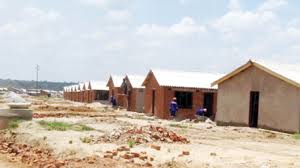New measures to clear housing backlog

By Albert Nxumalo
THE Government has admitted that it is faced with a huge challenge to deliver affordable and quality housing in both urban and rural areas as set targets continue to be missed.
Under the Transitional Stabilisation Programm (TSP), government had identified housing delivery as one of the programmes targeted for implementation under Priority Public Infrastructure.
The focus was on prioritising provision of housing stands and the requisite social amenities to address the national housing backlog which stands at about 1,2 million.
However, despite concerted efforts the country continues to experience a huge housing backlog, particularly in urban areas.
A total of 1.25 million units had been earmarked but only 164 195 fully serviced residential stands and development of 49 870 completed houses was achieved countrywide.
A new five year National Development Strategy1 (NDS1) document launched on Monday by President Emmerson Mnangagwa states that macro-economic instability, rapid urbanisation resulting in growth of informal settlements that lack title to land and access to basic services infrastructure and limited investment in social amenities that include schools, health and recreational facilities hindered progress.
Government has since set a target of “220 000 housing units to be delivered as a function of effective demand during the Strategy Period.”
Construction of rental residential flats has been identified as one of key strategies to attain set goals, the document states.
“Rental accommodation, which caters for young professionals, has not been growing in Zimbabwe. During the NDS1 Period, measures to increase rental accommodation such as flats will be prioritised.
“In this regard, during NDS1 Period, the Rental Policy will be reviewed in order attract Pension Funds to invest in rental accommodation” reads part of the document.
The document further said measures to curtail the spread of COVID-19 have exacerbated the problem of unoccupied office space in the central business district.
“This presents an opportunity to convertm such unoccupied units into residential accommodation as part of the densification programme.
“To further support the densification projects, housing developments will allocate 40% of land towards construction of flats.”
In view of high cost of building materials, Government said other elements key to the successful resolution of accommodation deficiencies require a reduction in the cost of constructing housing units.
“This will be achieved through enhanced research and development programmes to support adoption of appropriate technology, modern housing structures adapted for climate change and resilience as well as utilisation of locally available materials”.
Bulawayo has a housing waiting list of well over 120 000, with less than 20 000 housing stands serviced in the last 15 years.






